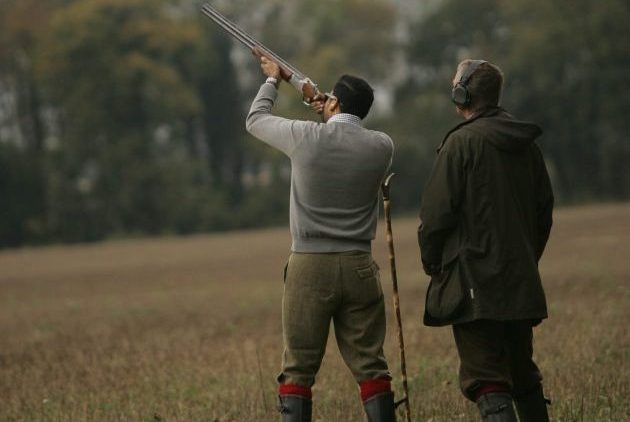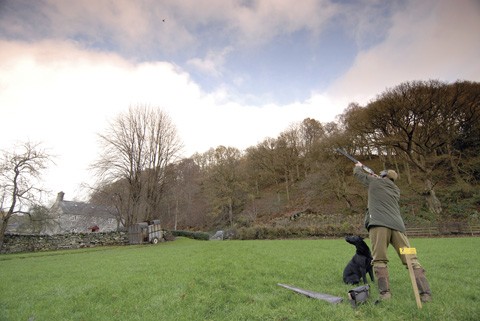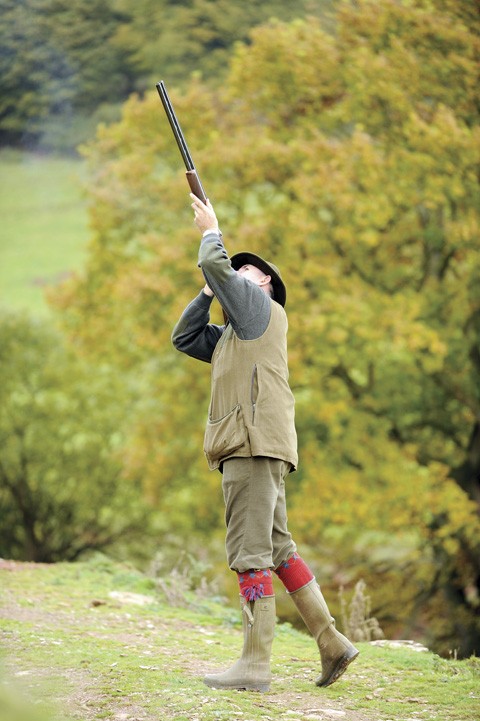Win CENS ProFlex DX5 earplugs worth £1,149 – enter here
Improve your driven shooting – here are 10 reasons why you might be missing
Driven shooting: Understanding why you miss will improve your driven shooting.

Want to improve your driven shooting performance in the field this season? Wonder why you miss on a driven shoot day? In my experience of teaching there are 10 main reasons for missing the bird. Look through the list, take note of my advice and you should be well on your way to making matters better. (Read more about the origins of driven shooting here.)
Improve your driven shooting performance – here’s what you may be doing wrong.
1. Stopping the gun
This is the number reason for missing when you’re out on a driven shoot. (Read more about correcting stopping your gun) Check and hesitate and you allow more of the quarry you are shooting to fly on than just about anything else. I am not the only Gun who thinks this. Lord Ripon famously noted in King Edward VII as a Sportsman (1911):
“I will conclude these few remarks on the technique of driven shooting…with my favourite maxim: “aim high, keep the gun moving, and never check.””
Too long a stock can check the swing, as can a far forward hold on the fore-end, head raising, and a failure to lift the gun well with the front hand and push through as the shot is completed. Concentrate on developing a stance which is comfortable and which allows you to keep moving on easily. For driven birds I favour keeping the feet quite close together and moving them whenever possible to facilitate the shot.
2. Failing to keep the eye locked onto the bird’s head
This is the second biggest reason for missing – failing to keep one’s eye or eyes locked onto the bird’s head. Remedy this and you will certainly improve your driven shooting.
- It is crucial you develop this skill.
- It requires developed eye muscles and awareness of its importance.
- It needs training and practice.
- Lock onto the bird throughout the three seconds or so it usually takes to shoot a bird.
- Do this and you will unlock phenomenal powers of natural hand-eye co-ordination.
- Don’t do it and your swing will become hesitant and jerky, and the wrong eye may take over if you shoot with both eyes open.
- You may also raise your head, causing the gun to rise and stop.
3. Incorrect lead
Another very common error in all wing shooting is applying the wrong forward allowance either in error, or, as likely, because the shooter has insufficient experience of the sheer range of sight pictures required for different driven shooting situations. This begs a question: should one be looking for lead deliberately on each shot? The answer, of course, is no. Usually, I prefer to take my muzzles to the tail feathers and push on instinctively. If the bird is high, I like to start a yard or two back from the bird rather than on the tail feathers. But in all cases I like to form some sort of muzzle-bird relationship with the selected quarry early in the process of shooting at it. If I look for a lead picture deliberately, as I do on occasion – for example when wildfowling – I keep in mind that a typical bird 40 yards away wants about six to eight feet or thereabouts. I do not, generally, look for lead deliberately, just as I do not routinely maintain a deliberate lead. A more natural approach to lead, based on well practised drills with regard to initial muzzle placement, seems to work better for me in most situations.
Read our advice on how to know which is your bird.

Good shots use a consistent three beat rhythm to ensure accurate shooting on high birds.
4. Misjudging the line
- This is also a frequent cause of missing.
- Don’t cant the gun relative to the bird’s line but make an adjustment by twisting, i.e. canting, the gun to help follow its line.
- Get out an empty gun and practise some of the basic movements.
- In simple terms, driven birds may be shot without any noticeable twisting of the barrels within a certain arc to one’s immediate front. As soon as the bird moves significantly to the right or left I adjust my barrels as I swing to match the bird.
- The idea is to keep the barrels of a side-by-side parallel to the bird’s line and the barrels of an over-under perpendicular. This is an active, sometimes subtle process which I call ‘squaring up’.
5. Poor range estimation
- Often the height of pheasants is over-estimated, which may cause misses in front as well as a tendency to lose or fail to achieve any sort of adequate initial muzzle-quarry relationship.
- It is also a fact that many close and apparently easy “I-wouldn’t-bother-raising-my-gun-to-that” birds are missed in front too.
Rebuild from the ground up when the day is not going according to plan, starting with footwork
6. Poor footwork won’t improve your driven shooting
Good shots usually have great gun mounts and good footwork too, coordinating their lower body movements with the mount and swing. They take delicate little steps, barrels and front foot moving together when required, and, they don’t get wrong footed on many occasions. We all do sometimes, and when it happens we end up shooting out of balance. Of course, the best thing to do, and by far the safest, is not to shoot if out of balance – but sometimes it happens at the moment the trigger is pulled. If you look at the typical pictures of driven game shooters you will note those who are in perfect balance at the moment the shot is taken are in the minority. The simple rule is: keep the front shoulder over the front foot – easier said than done in a hot corner! One thing I find helpful is to take some fast, unexpected shots to the right by bringing my weight deliberately onto the right foot – not something I would normally do or advise for right-handers. (Read our list of the best boots for shooting.)
7. Being too tense
- Some of us start to miss because we tense up.
- To shoot well one wants to be bodily relaxed but positive of mind.
- One must commit to every safe shot and once committed shoot decisively.
- Maintain a positive mindset. You won’t be able to suppress all nerves, but you can use them in your favour.
- The effect of anxiety is to disrupt focus and smooth movement. Concentrate on these and you are more than half way to conquering your mind as well.

Maintaining good form and balance is essential for successful shooting.
8. Shoot to three beats
Some days everything seems to go like clockwork, on others the wheels fall off. Most people who shoot well shoot to three beats. The tempo changes depending on the range, angle and speed of the birds, but we should never lose that lovely, elegant, three beat timing. Do not poke and hope!
9. Using wrong load
Some miss birds because they are under or sometimes over-gunned. In recent years, I have increased my payloads significantly, 32 grams being my norm, and gone up a pellets size to No.5 shot for most of my driven shooting. On tall birds big pellets in larger number and a bit of choke definitely help.
I have managed to get this far without mentioned two of my favourite subjects much: eye dominance and gun fit. A stock which is slightly too high, meantime, is much better to a game shot than one that is slightly too low, which may cause the wrong eye to take over in some circumstances.
10. Finally …
My final piece of advice to improve your driven shooting is this: stare each bird to death and keep the gun moving and on line.
This article was originally published in 2014 and has been updated
Related Articles
Get the latest news delivered direct to your door
Subscribe to Shooting Times & Country
Discover the ultimate companion for field sports enthusiasts with Shooting Times & Country Magazine, the UK’s leading weekly publication that has been at the forefront of shooting culture since 1882. Subscribers gain access to expert tips, comprehensive gear reviews, seasonal advice and a vibrant community of like-minded shooters.
Save on shop price when you subscribe with weekly issues featuring in-depth articles on gundog training, exclusive member offers and access to the digital back issue library. A Shooting Times & Country subscription is more than a magazine, don’t just read about the countryside; immerse yourself in its most authoritative and engaging publication.







